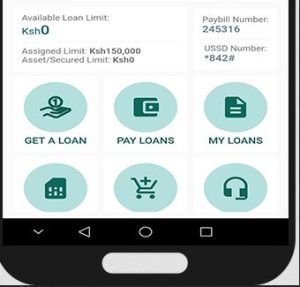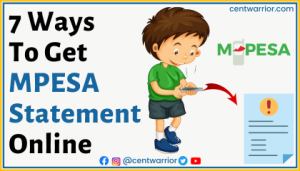Life is full of surprises, some not so good and often leading to financial distress. Issues like unforeseen medical costs, unplanned travels, and job losses are better dealt with when you master how to build an emergency fund.
It starts with determining your monthly expenses, having a savings goal, and creating a savings schedule. Then, you’ve to include the fund in your budget, set it up, and start saving.
Once you follow these six steps, you can start building your emergency fund, which should equal 3-6 months of household living expenses. Realistically, attaining this target may take several months, which can be discouraging.
However, if you know how to salvage a few shillings here and there, as I’ll share, you can build your emergency fund much quicker. And to convenience you, I’ll share several ways you can save more money for building your emergency fund.
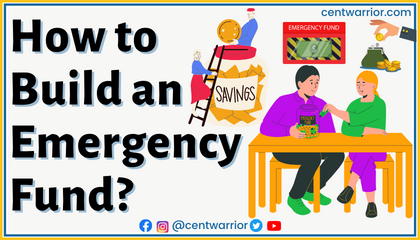
Here’s everything I’ll cover in this post:
- What’s an emergency fund?
- Why do you need an emergency fund?
- Where do you keep your emergency fund?
- When do you use an emergency fund?
- How long does an emergency fund take to build?
- How do you build an emergency fund?
- Ways to get more money for your emergency fund
- How do you start an emergency fund with no money?
Let’s dive in!
What is an Emergency Fund?
An emergency fund, sometimes a reserve or contingency fund, is money set aside for financial shocks like an unplanned medical bill, home or car repair, job loss, extended illness, unexpected travel, or family emergency.
An emergency fund financially cushions you against unforeseen events and unplanned expenses.
Why Do You Need an Emergency Fund?
Having an emergency fund comes with several advantages, which include the following:
- Cushions against financial emergencies – An emergency fund is your safety net or financial cushion when facing an unforeseen urgent but necessary expense. It enables you to meet these expenses with confidence.
- Avoid debt – Most Kenyans rush to emergency loans because they have no money for emergencies. With an emergency fund, however, you can avoid borrowing, and that keeps you away from debt.
- Protect other savings – If you have other savings, such as money for your kids’ education or business, you may use it when you don’t have an emergency fund.
- Protect important assets – Sometimes, financial emergencies force us to place as collateral or sell our essential assets. An emergency fund, however, changes the narrative by protecting your assets.
- Helps with budgeting – It’s hard to budget and follow it if you don’t allocate some money to your emergencies. But with an emergency fund, it’s easy to budget for your money, no matter how much you make.
- Sound financial decisions – Once you have a budget and an emergency fund, it’s not easy to misuse your income as you have a clear idea of how to use your money.
- Savings culture – Since funding an emergency fund requires you to save regularly, it instills a savings culture in you, making it easy to save for other things.
- Peace of mind – Many people suffer financial shocks and succumb to stress, anxiety, and depression. You can, however, avoid all that by having an emergency fund.
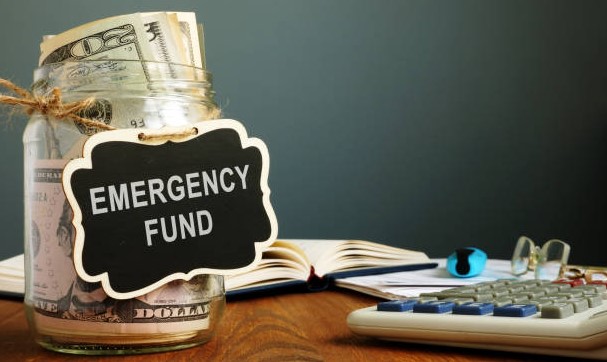
Where to Keep Emergency Fund
An emergency fund should be easily accessible to allow you to attend to financial emergencies when they happen. The money should also grow, and that’s why we recommend a money market fund.
Some of Kenya’s best-paying money market funds have a 9% annual yield rate or more. That includes Sanlam, CIC, Britam, Cytonn, Absa, Madison, Zimele, NCBA bank, and Old Mutual money market funds.
These money market funds also come with a 1 – 3-day withdrawal window, making it easy to have your money when a financial shock happens.
But other than money market funds, you can keep your emergency fund in the following:
- High-yield savings account – A high-yield savings account allows your money to grow at an annual percentage yield (APY) rate of 4% or more. That’s the case of KCB’s Simba Account, Absa Zidisha account, and PureSave by Stanbic. You can visit your bank and ask about this option.
- Online/Mobile saving application – You can also lock your funds using a mobile saving application like Mshwari or an online app offered by your bank. Though the interest rate is low, your money will still grow, but more importantly, you can access it, even though it’ll mean foregoing the interest.
- Certificate of Deposits (CDs) – A Certificate of Deposit allows you to earn interest on a lump sum saved up for a fixed time. The difference between it and a traditional savings account is that your money is untouched for a fixed period and earns higher interest. You can talk to your bank about CDs too.
When to Use Emergency Fund
You don’t expect to run to your emergency fund when making a large purchase, such as a car. You also don’t expect to use the emergency fund for a sizeable unnecessary expense such as a vacation.
So, what is it for? To answer that, you’ve to ask these questions:
- Is it an emergency?
- Is it an essential expense?
- And is it urgent?
Is the answer to the three Yes? Then you can use your emergency fund. But if it’s not, then you shouldn’t use it.
Here are the things you can use an emergency fund for:
- Unplanned medical bills
- Job loss
- Car repairs
- Home repair
- Family emergencies
- Unplanned travels
- Funeral costs
And here are things you cannot use an emergency fund for:
- Upgrading your wardrobe
- Buying the newest gadget
- Renovating or upgrading your home
- Vacation or unnecessary trips
- Starting a business
Concerning starting a business;
The reason is that sometimes businesses fail, and you don’t want to leave yourself without a safety net. If you’re going to start a business, you must save for it.
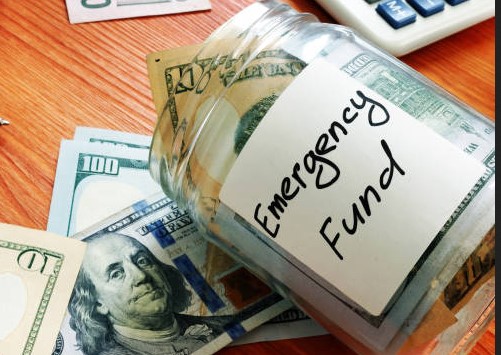
Time-wise, How Long Does It Take to Build an Emergency Fund?
Different people take different durations to build an emergency fund. It depends on how much you make and how dedicated you are to saving and fully funding the fund.
On average, however, it takes 6-18 months to fund an emergency fund fully. But as we’ll see later, you can hasten the process with a few saving tips.
How to Build an Emergency Fund Fast in 6 Steps?
Now that you know what to use an emergency fund for and why you need it, follow these six steps to build it:
Step 1 – Determine Your Monthly Household Expenses
You are building an emergency fund to cover your household living expenses for at least six months. That’s only possible if you first know your monthly living expenses.
So, list them and ensure they are necessary expenses such as food, healthcare, transport, utility bills, rent, debt repayment, and others.
Step 2 – Have a Savings Goal
After determining your household expenses for a month, have a goal. If your household’s monthly living expenses are Ksh 50,000, multiply that by six months, and your savings goal will be Ksh 300,000.
If the expenses are Ksh 30,000, your emergency fund amount should equal Ksh 180,000; if it’s only Ksh 15,000, then the emergency fund should equal Ksh 90,000.
Step 3 – Create a Saving Schedule
After establishing how much you need to save for emergencies, determine how long you’ll have to save. Remember, it takes an average of 6-18 months to save up for an emergency fund. So, you can choose whatever works for you.
Step 4 – Include the Emergency Fund in Your Budget
You have to budget for the emergency fund. Depending on your saving schedule, indicate the emergency fund allocation on your budget. If, for example, you plan to save Ksh 10,000 every month until you fully fund your emergency fund, let the Ksh 10,000 be part of your monthly budget until you build the emergency fund entirely.
Step 5 – Set Up the Fund
Now go ahead and open a separate account for your emergency fund. Though you can still have the money in cash, it’s a good idea to put it somewhere where it can earn interest, and you can consider the options I shared earlier especially money market funds.
Step 6 – Start Saving
Lastly, start saving. Put money into the emergency fund according to your saving schedule and work towards fully funding the fund. Let’s see how you can save much faster next!
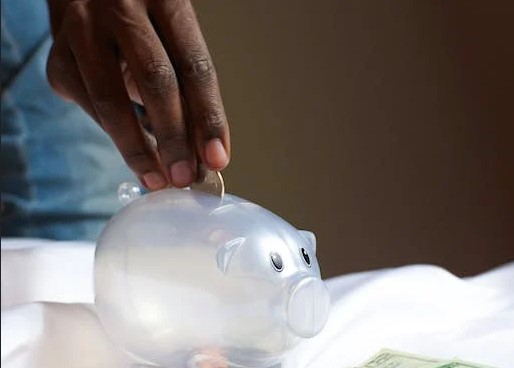
How to Get More Money to Build Your Emergency Fund?
While it ideally takes 6-18 months to create an emergency fund, it’s not carved in stone. You can hasten the process by saving more money, and here’s how to do it:
1. Automate Savings
Before you can spend money, you should save. We call that ‘Paying Yourself First’ in personal finance, and it’s critical to ensuring you save without fail.
The easiest way to pay yourself first is to automate the savings. Talk to your bank about it, and they’ll help you automate your account so that a particular part of your income gets rerouted every month as soon as you earn.
2. Avoid Unnecessary Expenses Using the 48-Hour and 30-Day Wait Rules
Not everything you buy impromptu is something you need. Some purchases are just for the moment, and once days go by, you start noticing that you didn’t need to make them.
To avoid such regrets, master the 48-Hour Rule when making minor purchases and paying for minor expenses.
For example, before buying something on the streets, give yourself up to 48 hours to think about the purchase. If you still think you need to buy the item and it’s within your means, then buy it. But if it’s not, skip the purchase.
The same principle applies to the 30-Day Rule but only to major purchases or expenses such as a trip. Once 30 days pass, and you realize you don’t need to make the purchase, skip it and save the money.
3. Cancel Needless Subscriptions and Memberships
Some subscriptions eat your money as they are needless when planning to save. For example, you don’t have to subscribe to paid TV when you can watch free-to-air local channels.
You also don’t need memberships that involve paying a certain amount every month, such as a gym membership. You can cancel it and use YouTube to work out.
4. Stash Windfall
You should put the money into your emergency fund if you stumble upon unexpected savings or gains. The windfall, in this case, includes work bonuses, unexpected inheritance, tax savings, and return on investment.
The more you redirect the windfall gains into your emergency fund, the faster you fully fund the fund, and the sooner you cushion yourself against financial shocks.
5. Lower Utility Costs
Electricity, water, gas, internet, and phone costs are always high. Everyone complains about these utilities costing more, but it doesn’t have to be that way.
You can save on these costs. For example, switching to energy-efficient lights and appliances save on energy costs. Meanwhile, recycling water and avoiding wastage saves water costs, as opting for Tunukiwa deals by Safaricom saves on phone and internet costs.
6. Cut Down on Transport
Transport is another high cost at home. If you drive, for example, you have to factor in the price of gas, auto insurance, maintenance, and repairs.
How about you do away with the car until you fully fund your emergency fund? You could use public transport or even bike to work. In the long run, that saves you money to reroute into your emergency fund.
7. Sell Stuff You No Longer Need
Why keep the stuff you don’t have use for anymore? If it’s something, you can sell, such as baby gear, power tools, or furniture, sell it and put the money in your emergency fund.
8. Increase Your Income
If you cannot cut your household expenses, find a way to infuse more money. That may mean getting a part-time job or starting a side business.
For example, you could bring in some extra cash by listing your car for ride-sharing on Uber or Bolt when you are not working. The more you bring in, the easier it is to offset your living expenses and spare some money for your emergency fund.
9. Cut Off Expensive Habits
Some habits are too expensive to maintain and make it hard to grow your emergency fund. That includes smoking, heavy drinking, frequent coffee dine-outs, chocolates, and gambling.
If you can eliminate these habits, you can redirect the saved money into your emergency fund. Doing so will indeed shorten the duration of fully funding your emergency fund.
10. Go DIY
You don’t have to call the repairman whenever something breaks at home and needs fixing. Issues like plumbing and some wiring or electrical jobs are DIY.
You also don’t have to hire someone to do landscaping, gardening, laundry, or house cleaning. If you can avoid all that, you can save more, making it easy to build your emergency fund.
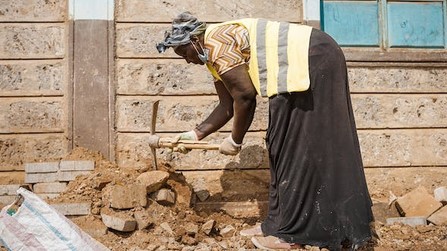
11. Cook at Home
Avoid unnecessary dinner dates and dine-outs. They are expensive and will only derail your emergency fund savings goal.
Instead of eating out or ordering food from outside, cook at home. That allows you to shop for healthy and affordable ingredients and prepare healthy meals.
12. Leverage Discounts
We all could do with a bit of discount.
Let’s say you earn 10-30% off school items or grocery supplies;
Then all that equals savings, making it easy to fund your emergency fund completely.
How to Start an Emergency Fund with No Money?
Yes, you need money to build an emergency fund. That doesn’t mean you can’t do it without cash. It starts with finding a job, enabling you to earn something and save some.
If you can’t find a job, start a side hustle. Some side hustles don’t require money; examples are freelance writing and YouTube.
Meanwhile, as shared above, reduce your expenses and save at any opportunity.
Closing Remarks:
The above guide dictates how to build an emergency fund in Kenya regardless of paycheck size. As shared, you can even create an emergency fund without money.
Just follow the steps, and if you need an expert’s help, talk to us on social media. We are a family of Cent Warriors promoting financial literacy in Kenya through the materials we share.
Also Read:
- Everything about a Sinking Fund
- Sinking Fund V. Emergency Fund
- About the Zero-Based Budgeting
- Logbook Loans in Kenya Explained!
- KCB Vooma Loan Explained
- Kuza Money Market Fund Review
- How to Make $600 a Day
- Senti Loan App Review
- One Year of Financial Sacrifice to Completely Change Your Life
- AA Kenya Shillings Fund Review
- Equity Money Market Fund Review
- Xeno Kenya Bond Fund Review
- How to Get Out of Debt on a Low Income




